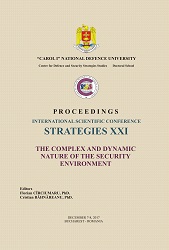BALANCE OF POWER AFTER UKRAINE CRISIS
BALANCE OF POWER AFTER UKRAINE CRISIS
Author(s): Levan Gegeshidze
Subject(s): Politics / Political Sciences
Published by: Carol I National Defence University Publishing House
Keywords: balance of power, balance of threat; national security; bandwagon; Introduction
Summary/Abstract: Based on the balance of power and balance of threats theories, the presentresearch studies the security policies of a set of European Union Member States: Poland, Balticcountries and Germany. What influence has the occupation of Crimea and hybrid war in EasternUkraine had on the foreign and security policies of those countries? The research is aimed atrevealing that the sense of threat forces countries to concentrate on their defense capabilities; onthe one hand, to strengthen their military capacities and, on the other hand, to tighten allianceswith other countries. States have such alternative, choose to balance the source of threat and not tobandwagon bigger countries. The given theory has been verified on the example of Baltic countriesand Poland.Based on the offensive realism assumptions, the research also analyses national securitypolicy and military modernization of the Russian Federation. Unlike postmodern Europe, Russianpolitical elite thinks and acts according to realism categories. NATO and EU extension towards itsborders is perceived as the threat to national interests. It is ready to use military force fordefending its interests.At the end of the research, we discuss the changes underway in internal and foreign policyof Germany since the start of the Ukrainian crisis. Despite economic interdependence, Germanyhas supported imposing of sanctions on Russia. Threats coming from Russia has forced Berlin togive up economic benefits.
- Page Range: 22-31
- Page Count: 10
- Publication Year: 2017
- Language: English
- Content File-PDF

